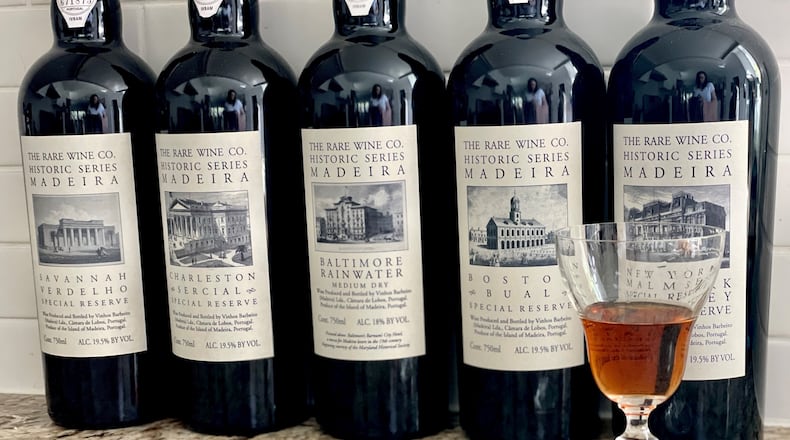Obscure these days, Madeira once was the most popular wine in America. How did the tiny Portuguese archipelago of that name come to produce the most prestigious wines, then fall out of favor?
Madeira is the largest island of a group in the North Atlantic. It is about 300 miles off the coast of northern Africa, but almost twice that distance from Portugal. In Colonial times, Madeira was an important stop on the way to the American colonies. Ships would reload with supplies there; one provision, Madeira’s wines, became synonymous with the island.
Those wines, now simply referred to as Madeira, were fortified with grape brandy for the transatlantic voyage. Fortifying wines preserves them and raises the alcohol level: 19% alcohol, compared with 12%-15% in regular wine. Sailors also liked the way the wine tasted after it was heated in the barrel in the bottom of the ship. This type of “cooking” eventually was replicated at the wineries, and the process gives Madeira some of its rich and nutty flavor.
The Founding Fathers were such fans of Madeira that they toasted the Declaration of Independence with it. America produced no decent wine at the time, and the Portuguese wine became so in vogue that an estimated 90% of all Madeira was shipped here. Madeira eventually went out style in the late 19th century; vine disease and Prohibition almost killed it altogether.
Nowadays, there are a few quality winemakers producing great Madeira. One of those is Vinhos Barbeito, who was approached a few years ago by the Rare Wine Co. about developing a line of Madeiras. The resulting Historic Series pairs the grape and style of Madeira favored at each Colonial port.
Here is our review of that lineup:
Charleston Sercial. This driest style starts with aromas of dried citrus and tobacco. On the palate, it has a touch of maple, salinity and an acidic tanginess. It’s a nice way to start a meal or dinner party. Try it with smoked almonds or hard cheese.
Savannah Verdelho. This one has aromas of hazelnut and tastes of dried apricots. The dynamic acidity makes it a great partner for creamy cheeses.
Baltimore Rainwater. This is the lightest style, with a little less alcohol (18% compared with 19.5% in the other four expressions in the series). It is fairly crisp, with praline on the nose, and finishes with a touch of seawater and orange peel. It’s a good starter when served chilled, or mix it with tonic water and lemon peel in a tall glass of ice on a warm afternoon.
Boston Bual. We smell a hint leather and detect black walnut, caramel and subtle coffee on the tongue. We want this with a rich, funky cheese, like epoisses.
New York Malmsey. The sweetest Madeira of the bunch, this one still has lovely acidity for balance. We pick up the aroma of baking spices and taste molasses, milk chocolate and tart cherry. This would pair well with a spice cake, although it’s tasty enough to be dessert all by itself.
The Slaters are beverage industry veterans and the proprietors of the Expat and Lark Winespace in Athens.
Sign up for the AJC Food and Dining Newsletter
Read more stories like this by liking Atlanta Restaurant Scene on Facebook, following @ATLDiningNews on Twitter and @ajcdining on Instagram.
About the Author
The Latest
Featured

